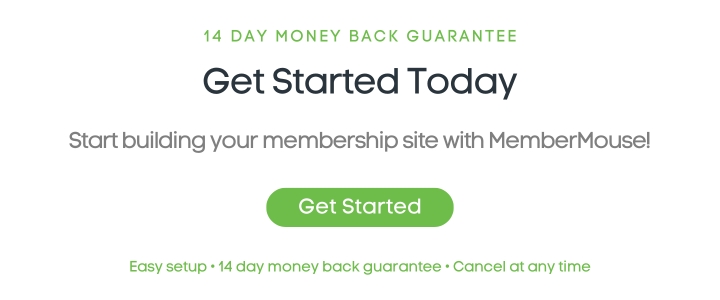How To Sell High Ticket Coaching: A Helpful Growth Guide
If you're a skilled coach who delivers real results, you deserve to charge what you're worth. High-ticket coaching is about the transformation you provide – the kind of impact that makes clients eager to invest.
The key is to position yourself as the expert that high-value clients want to work with. When you know how to showcase your expertise, build trust, and communicate the results you deliver, selling high-ticket coaching becomes a natural, rewarding process.
In this guide, we’ll break it all down. We’ll start by defining what high-ticket coaching really is, explore its pros and cons, and then walk you through proven strategies to attract premium clients and sell your coaching services with confidence. Let’s dive in!
What Is High Ticket Coaching?
As the name suggests, it's a specific type of coaching that usually has a “high ticket”. In other words, that means it's expensive.
With high ticket coaching, customers are willing to make a significant investment in growing their skills and expertise.
This is typically because the knowledge they gain from this coaching can help them be more successful (and profitable) in their careers.
So typically, it is very niche and related to a lucrative field. For instance, high-ticket financial coaches are common.
One of them is MemberMouse customer, TradePro Academy, which specializes in providing quality education and community to aspiring and professional traders.
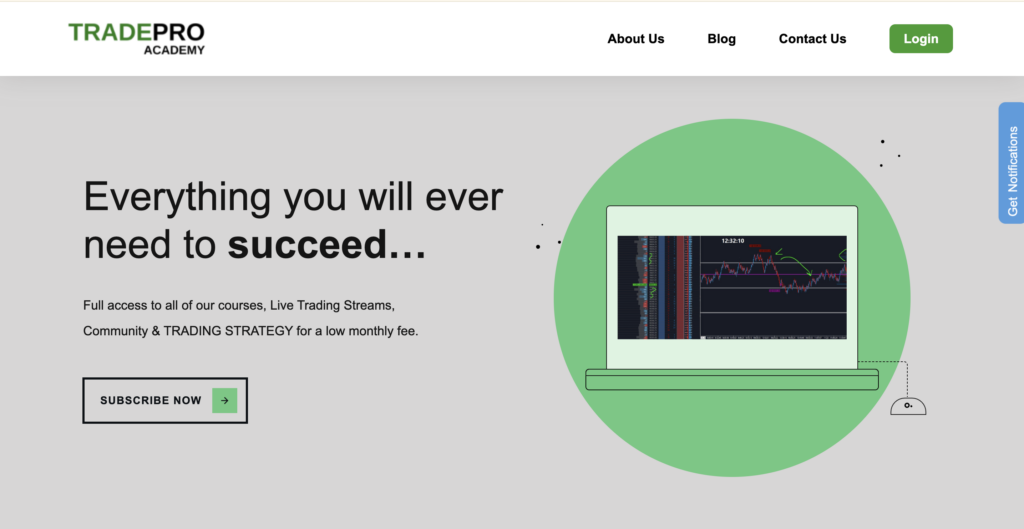
Additionally, you can find a lot of high-ticket sales coaches catering specifically to ambitious leaders who want to achieve specific goals:
Elena Mutonono is a seasoned business coach who helps teachers work less and make more with her revolutionized online language teaching, Smart Teacher's Library.
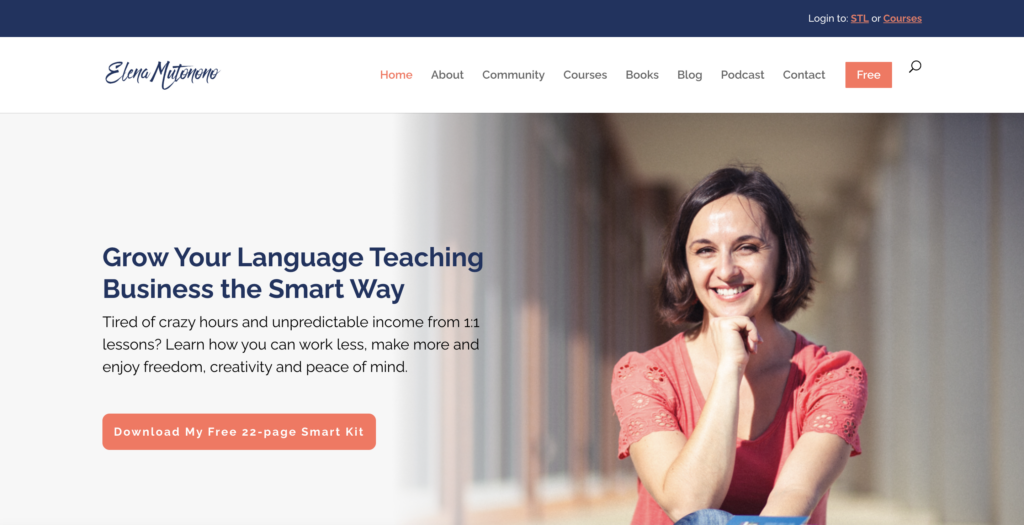
This type of coaching can also be geared towards business executives or even organizations. However, most of the time it's meant for individuals and comes with a bill of at least $1,000 (often more).
Since it's a significant expense, it tends to combine 1:1 coaching sessions with exclusive courses. It may also provide users with access to a knowledgeable community via a membership website or forum.
What Makes High Ticket Coaching Different From Regular Coaching?
To put it simply, the difference is the price and the quality of services.
When it comes to regular coaching, you may get one or two of the elements offered in a high-ticket coaching purchase.
For instance, you might get access to some online courses and a monthly group coaching call (instead of a 1:1 session).
High-ticket coaching should provide more value than regular coaching. To start, high ticket coaches usually have more expertise to offer – this is why they can charge more.
What's more, since high ticket coaches usually provide 1:1 attention, they offer a much more customized experience with added perks and resources. As a result, they're (ideally) able to help clients achieve their goals faster.
The Pros and Cons of High Ticket Coaching
If you're still not sure whether this type of business is right for you, let's look at the primary pros and cons of high-ticket coaching.
Pros of High Ticket Coaching:
- Provides higher profit margins
- Attracts more dedicated clients
- Allows you to cultivate skills as a mentor
- Helps build your reputation as an authority in your niche
Cons of High Ticket Coaching:
- Can be difficult to convince customers to buy (due to the high price)
- May be difficult to scale
- Can be time-consuming
All-in-all, high-ticket coaching can be an excellent way to grow your business and reputation. The main drawback is that anything with a higher price tag is going to be a harder sell, so you'll have to plan carefully if you want to be successful. In the following sections, we'll explain how to do that.
How To Create a High Ticket Coaching Program (In 4 Steps)
Making your first sale as a high-ticket coach may seem like a challenging task. However, it's certainly within your reach – as long as you follow some tried and true strategies. Here's how you can create an effective program in four steps!
1. Establish a Clear Niche
As we mentioned earlier, high-ticket coaches are able to charge more for their services because of their highly valuable expertise. This means that generalists will have a lot harder time selling a high-ticket coaching program.
With this in mind, you'll want to establish a clear niche for your business. Some of the most common industries for high-ticket coaching are:
- Financial coaching
- Business coaching
- Leadership/executive coaching
- Life Coaching
If you're learning how to sell high-ticket coaching, chances are you already have some sort of online presence. So if you have a well-established market in the right type of area, you're all set. On the other hand, if you don't already have a clear niche, you can try establishing one in a few ways.
First, you can rebrand yourself as an expert in your niche of choice. To do this, you'll need to audit your website and all of your social media channels.
Take some time to review your profiles, and include the right kinds of titles, bios, and social proofs as indicators of your expertise.
For example, if your previous intent was to be a “lifestyle blogger”, but now you want to offer life coaching, you'll need to convey this shift throughout your online presence.
If you create any content, such as blog posts, it's also a good idea to focus on your new niche there. This way, you can build your credibility as an expert in the subject.
2. Create a Detailed Buyer Persona
High-ticket coaching should offer very real value. However, another aspect that affects the appeal of these programs is the hyper-focused attention on a specific group.
Therefore, creating a detailed buyer persona can be very helpful when designing your high-ticket coaching program. To do this, you'll want to start by establishing your key demographic.
For example, you might be targeting millennial women seeking therapy in California or you could be reaching out to high-achieving women who are struggling with burnout.
When defining your buyer persona, the key is to be as specific as possible. With this in mind, you can ask yourself some of the following questions:
- Where does my client live?
- What are my client's goals and motivations?
- How old is my client?
- What level of education does my client have?
- What is my client's income/budget?
- How would my client prefer to conduct sessions (virtual or in-person)
You should try to make the resulting profile as thorough and specific as possible. This way, you can properly prepare for conversations with clients.
Similarly, you'll be able to more appropriately craft your messaging when marketing your high-ticket coaching program. Of course, don't be afraid to keep refining this persona over time as you get a better feel for your target audience.
3. Define Your Unique Selling Point (USP)
After you've established a detailed buyer persona, you'll be better equipped to define your unique selling point (USP).
As the name suggests, your USP explains what unique value you can offer to your client. When it comes to high-ticket coaching programs, the best approach is to be clear and results-oriented.
To define your USP, you'll need to audit all the benefits you'll be providing for your clients. This can encompass everything from 1:1 sessions to exclusive online courses:
However, the core of your USP should be what your clients can achieve when they complete a high-ticket coaching program with you.
For example, if you're a financial coach, your ideal high-ticket clients are likely entrepreneurs or professionals looking to scale their investments, build generational wealth, or optimize their financial strategies for long-term success.
High-ticket coaching is about delivering deep expertise and strategic guidance to help clients achieve transformative results.
Once you've defined your USP, you'll be better able to market your services (which we'll discuss in the next section).
4. Design Your High Ticket Coaching Program
After you've chosen a niche, created a buyer persona, and defined your USP, the next step is to design your high-ticket coaching package.
Primarily, this requires you to establish the structure of your program. For instance, after a client signs up, your program may have a workflow like the following:
- Send the client a welcome email and questionnaire to fill out before the first session.
- Conduct the first 1:1 session for goal-setting (60 minutes).
- Send the client a first “assignment”, and details to create an account on your exclusive membership site.
- Conduct a second 1:1 session with the client (60 minutes).
- Continue with further sessions and assignments as needed/relevant.
- Send a thank you email and request a review/testimonial.
Since your program is “high ticket”, when designing it be sure to think about how you can offer top value at every step. Keep in mind that you can also incorporate and repurpose pre-existing material you've created in the past.
This could be anything from ebooks to full-blown online courses. Just ensure that the resources are relevant and are modified as needed to be appropriate for the program.
Once you've designed your program, you can use it to define the actual client package you'll be offering. Then it's a matter of marketing your business and finding your first clients, which we'll cover in the next few sections.
Creating a Clear High Ticket Coaching Funnel
Before you can start advertising your new program, you'll need to build a clear high ticket coaching funnel. In short, this is a marketing funnel that's specifically geared toward the needs of high-ticket coaches.
A marketing funnel describes the stages a potential customer goes through from learning about your business to making a purchase (and beyond). Its primary stages can be described as:
- Awareness
- Consideration
- Conversion
- Loyalty
Of course, you'll want to elaborate and expand on these basic steps. Here's an example of what the stages in your high ticket coaching funnel may look like:
- Awareness. This can involve marketing on your website and social media platforms, along with anywhere else your target clients are located. It should include advertising yourself as an expert and spreading the news about your high-ticket coaching program specifically. Familiarizing people with your brand can be a good starting point.
- Consideration. When your target audience sees your brand and offer, they may take steps to consider whether it's right for them. This can involve clicking through to view more details, following your accounts, or consuming your content.
- Engagement. Since a high-ticket coaching program is such a big investment, potential clients are likely to reach out with questions about it. Engaging prospects in conversation, sharing about yourself, and getting to know them helps to build relationships and encourage trust.
- Discovery call. If you're able, it's a smart idea to offer a free consultation. This gives prospects a taste of what they'll receive from your program, along with another chance to engage.
- Follow up. For high-ticket customers, following up is crucial. Sending a friendly email inquiring about their continuing interest is an essential best practice.
- Conversion. Once a client signs up for your high ticket coaching program, you've succeeded at converting them. All that's left is for them to complete the program! It's vital to keep taking whatever steps you can to ensure that their experience is top-notch.
- Loyalty. After a client completes the program, and assuming they're satisfied with the results, you'll ideally be able to count on them for referrals or at least a positive testimonial. So be sure to send a follow-up survey or request a review, and stay in touch from time to time.
Once you know exactly what your high-ticket coaching funnel will look like, you'll be able to more effectively sell your program. Keep in mind that potential clients at each stage in the process will have different needs that you'll have to address.
How To Sell Your High Ticket Coaching Program (3 Key Tips)
Now that you know how to create your program and set up your sales funnel, let's talk about how to sell your coaching business. These three methods aren't the only options at your disposal, but they're excellent starting points for attracting your first clients.
1. Market Your High Ticket Coaching Services Online
In order to make sales, you'll need to effectively market your high-ticket coaching services. The key to this is outlining and highlighting the outcomes your client can expect after working with you. In other words, you'll need to put together a carefully crafted and condensed version of your USP.
For instance, if you're a life coach for leaders, one outcome could be that you'll help clients create a clear action plan for success.
When it comes to marketing your high-ticket coaching services, it's important to make them as convincing as possible.
It should be clear to your audience how much they stand to gain from your program, so be sure to highlight any tangible goals that clients will likely achieve after working with you.
Once your messaging is in place, it's time to get the word out there! First and foremost, you'll want to advertise your program on your website.
If you don't yet have a website or want to build a dedicated one for this purpose, we'll explain how to do that soon.
Use social media to share insights, showcase your expertise, and engage with your audience. Position yourself as a thought leader by joining discussions, answering questions, and providing value.
Podcasts are another great way to build authority. Whether you start your own or appear as a guest, they help you reach an audience already interested in growth and transformation.
The more visible and engaged you are, the more high-value clients will see you as the coach they need.
2. Offer Free Consultations and Promotions
If you've implemented all the tips we've discussed so far in this post, you'll be well-equipped to successfully make sales.
However, the reality is that no matter how well you prepare, getting started as a high-ticket coach can be challenging. The price is high, and if you're brand-new, potential clients have no proof that you'll actually be able to help them.
So to increase your success rate early on, you may want to start by offering free consultations. This should be a one-time appointment and should be no longer than 30 minutes (since you don't want to give away too much of your valuable services). It's a great way to ease a potential client's concerns and begin establishing a rapport.
If providing free consultations isn't feasible for your business model, or you simply don't have the availability, you might consider offering limited-time promotions.
For example, you could offer a 10% discount for sign-ups on Black Friday. Alternatively, you could provide digital freebies such as ebooks or worksheets, which give prospects a taste of your expertise and coaching style.
3. Advertise Client Testimonials
Once you've gained some traction as a high ticket coach, advertising client testimonials is crucial. That's because they're a highly effective way to grow your business beyond those first few customers.
Research shows that as many as 94% of people are more likely to use a business after reading a positive review
Positive testimonials help you build credibility, and demonstrate to potential clients what they can achieve by working with you. You can feature them prominently on your website, as well as in any other marketing materials.
If you only have a few testimonials, don’t worry – even one or two strong reviews can make an impact.
With high-ticket coaching, this should be even easier since you have a close 1:1 relationship with your clients.
Use that connection to ask for feedback at the end of your program, and encourage them to share their success stories.
For instance, you can include a link for clients to leave a quick review when you send them a final thank you email.
How To Build a Website for Your High Ticket Coaching Program (In 5 Steps)
It's challenging to get the word out about your coaching program if you don't have a website. Even if you have a personal site, it's a good idea to build one specifically for this purpose.
That way, every element can be designed around explaining your program and convincing visitors to try it out.
What's more, you can offer and sell your coaching sessions right through your site. So before we wrap up, let's walk through how to build a high ticket coaching membership site using the MemberMouse WordPress plugin!
Step 1: Get Web Hosting and Install WordPress
In order to create a website, you'll need the right software and resources. If you're a beginner and you want to be able to customize your site however you like, we recommend using WordPress:
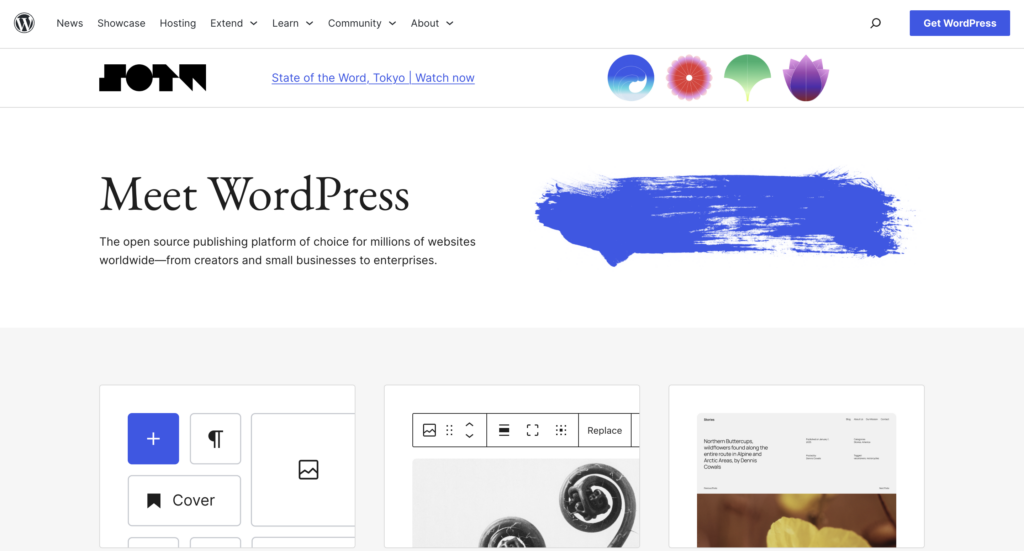
This platform is both easy to learn and endlessly customizable. Best of all, it's free to use!
However, to get your site online you'll still need to pay for web hosting services. Some of the best web hosting companies for WordPress include Kinsta, SiteGround, and DreamHost.
You'll also need to choose a plan. If you're unsure what to pick, you can begin with a low-cost shared hosting plan, and scale up as you require more tools and resources.
After choosing a hosting plan, the next step is installing WordPress. Many hosting providers offer a one-click installation, making the process quick and hassle-free. If manual setup is needed, it’s still a straightforward process.
For those new to WordPress, WPBeginner – a trusted resource and an excellent place to find step-by-step guides, tutorials, and tips to get your site up and running smoothly.
Step 2: Choose Your WordPress Theme
Next, you'll need to create a design for your membership site. Fortunately, this is easy with WordPress. You don't need any web design experience, and you won't have to touch any code if you don't want to.
Instead, you'll want to choose a WordPress theme. This is an add-on that will determine the look and layout of your website. It will also include options to help you build your site faster, such as color schemes, pre-built core pages, and navigation menus.
You can select a free theme from the WordPress Themes Directory
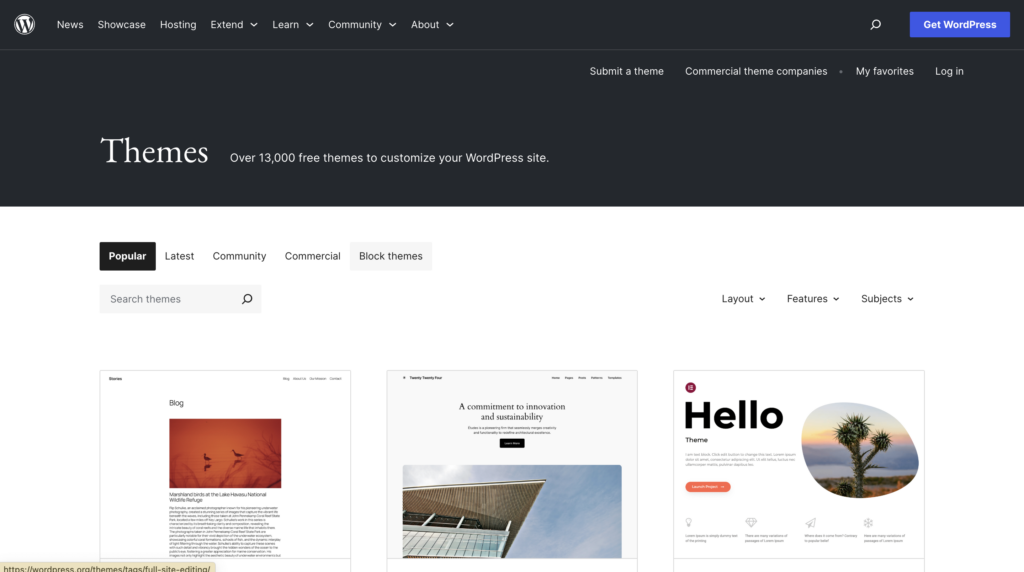
You can also browse premium themes at marketplaces such as ThemeForest. For best results, you may want to opt for a WordPress membership site theme. This will ensure that your site's design complements its functionality.
Once your theme is installed and activated, you can easily alter it to your liking using the WordPress Theme Customizer. Some themes even come with built-in tools to make this process more flexible.
Step 3: Install the MemberMouse Plugin
Along with themes, WordPress also gives you access to thousands of plugins. These are add-ons that give your site new features and functionality. Using plugins, you can build any type of site you can imagine.
For your high-ticket coaching business, it's a good idea to set up a membership website. This will allow you to make your clients ‘members' on your site, and grant them access to all kinds of exclusive resources and features (which non-paying members can't see).
MemberMouse plugin is an excellent option for creating a lucrative membership site.
This tool enables you to easily create paywalled content and tiered memberships, so you can offer a variety of coaching plans. What's more, you'll get Courses for MemberMouse, which enables you to easily integrate your coaching with exclusive online courses.
MemberMouse also offers integrations with popular email software, along with coupon functionality, Stripe payment processing, analytics, and much more.
All of this expands on the baseline offered by a fresh WordPress installation, turning your site into a full-fledged business and coaching platform.
To get started, you'll need to sign up for a MemberMouse plan and set up the plugin. For complete instructions on this process, check out our guide on how to install MemberMouse.
Step 4: Create Your Memberships
Now that you have the tools you'll need, you're ready to learn how to sell high-ticket coaching sessions using MemberMouse.
To get started, you'll need to create your memberships. To do so, go to MemberMouse > Product Settings. Then click on Membership Levels:

On the next page, select Create Membership Level:
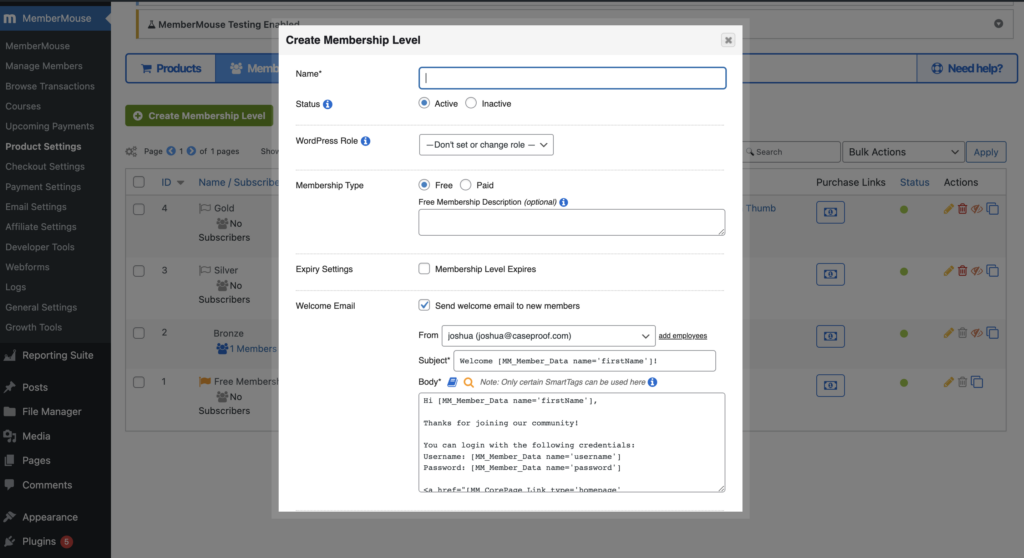
Here you can configure your memberships however you like. If you're only offering one set coaching program, you can simply create a single membership.
However, you can also offer various options at different price points. This way, clients can select the experience they like, whether it's a shorter program or something more in-depth.
You can even create a lower-tier option that provides access to certain gated content on your site, which is designed to intrigue members and convert them into high-ticket coaching clients.
It's also worth noting that if you have a lot of offerings, you can create bundles to make things easier and clearer for your clients. With MemberMouse, you're free to design and offer whatever types of memberships you want.
Step 5: Create Your Coaching Sessions
Now, all that's left to do is create your coaching sessions. To do that, you'll create ‘products' that will stand in for those sessions.
To do this, go to MemberMouse > Product Settings. Click on Products in the menu at the top of the screen:

After that, select Create Product:

Now you can fill in the details for a coaching session. Include everything potential clients will want to know – for example, don't forget to highlight the USP.
Then you can assign this ‘product' to a membership tier, to control who will be able to access it. If you have multiple types or lengths of sessions, you can create additional products to represent them.
At this point, you have all the basics you'll need to offer high-ticket coaching through your website. However, don't be afraid to take your time and keep customizing your site and memberships. After all, it's important to present a strong first impression for potential and new clients!
Conclusion
High-ticket coaching is an opportunity to create meaningful change for your clients while building a profitable, fulfilling career.
The key to success lies in positioning yourself as an expert, showcasing the real value of your coaching, and attracting the right clients who are ready to invest.
Throughout this guide, we’ve covered everything from defining your niche and structuring your program to marketing your services and leveraging tools like WordPress and MemberMouse to build a seamless coaching platform.
These strategies are sure to guide you to selling high-ticket coaching and building a brand that commands respect and delivers real results.
The demand for premium coaching is growing. Now it’s your turn to step into the spotlight, connect with high-value clients, and scale your coaching business with confidence.
What kind of high ticket coaching program are you developing, and why? Share your thoughts in the comments section below!
If you liked this article, be sure to follow us on Facebook, Twitter, Pinterest, and LinkedIn! And don't forget to subscribe in the box below.
Sarah Olaleye
Sarah is passionate about simplifying the technical nitty-grittys of websites, plugins, and digital marketing. As a content writer at MemberMouse, she has a keen eye for crafting engaging and informative content. Sarah plays a crucial role in educating and empowering users on the full potential of MemberMouse plugins. Bringing a blend of technical knowledge and creative flair, she ensures that each piece of content not only informs but also inspires. When not writing, she enjoys exploring the latest trends in technology and digital marketing, always seeking new ways to enhance the user experience.


